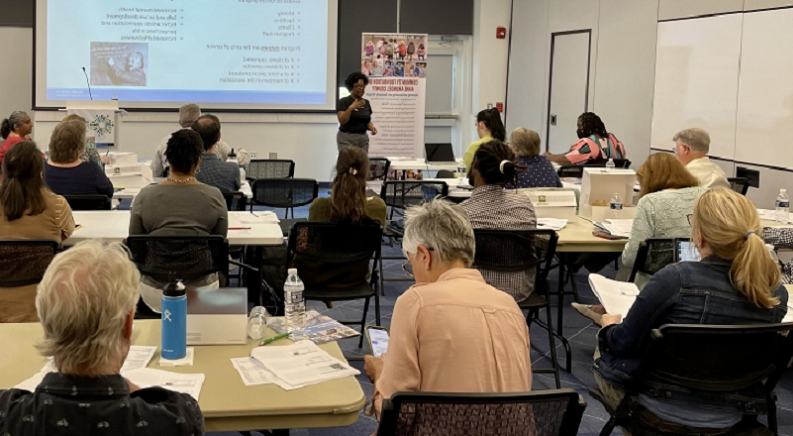
In every community, there are forces at play, working tirelessly behind the scenes, driving positive change and fostering growth. Often, these forces aren’t multinational corporations or governmental bodies, but rather, nonprofits—organizations that prioritize mission over margins. Nonprofits have a storied history of stepping in where others can’t or won’t, ensuring that every community member, regardless of their background, has a shot at a better future. But what exactly makes these organizations so essential for community development?
Contents
- Historical Background of Nonprofits in Community Development
- Advantages of Nonprofits in Community Development
- Disadvantages and Challenges for Nonprofits in Community Development
- References
Historical Background of Nonprofits in Community Development
The history of nonprofits is rich and varied, with these entities having played a vital role in shaping our societies over the years. Before diving into the evolution and significant milestones of nonprofits, it’s crucial to understand the broader context in which they emerged and thrived. Nonprofits have always risen to the occasion, filling gaps left by both the private sector and government, and addressing unique community needs.
Evolution of Nonprofits Over the Decades
Nonprofits, as we recognize them today, have their roots in ancient traditions of charity and community assistance. Various civilizations, from the early Greeks to the Chinese dynasties, had their forms of community aid, which often involved rich patrons or religious organizations providing for the less fortunate.
In the modern era, particularly during the late 19th and early 20th centuries, rapid urbanization and industrialization led to several social challenges. The gap between the wealthy and the poor widened, leading to the establishment of many charitable organizations in Europe and North America. These entities aimed to tackle poverty, improve living conditions, and provide educational opportunities.
As the 20th century progressed, nonprofits evolved further. The civil rights movements, women’s liberation, and environmental awareness campaigns of the 1960s and 70s saw a surge in advocacy and action-oriented nonprofits. These organizations aimed not just at providing relief but also at enacting systemic change.
Major Milestones in Nonprofit Contributions to Communities
Over the years, nonprofits have marked several milestones, each signifying their growing importance and diverse roles.
Post-War Relief Efforts (1940s-50s)
After the devastation of World War II, many nonprofits stepped up to aid in reconstruction, provide relief to war victims, and facilitate community rebuilding [1].
Environmental Awakening (1960s-70s)
Nonprofits played a pivotal role in raising environmental awareness, leading to significant policy changes and the inception of Earth Day.
Fight Against Global Health Issues (1980s-90s)
The rise of global health challenges, like HIV/AIDS, saw nonprofits not only providing care and support but also lobbying for research and affordable treatments.
Technological Advancement and Digital Outreach (2000s)
With the advent of the digital age, nonprofits embraced technology for fundraising, awareness campaigns, and virtual community-building, broadening their reach and impact.
Response to Global Crises (2010s-2020s)
From natural disasters to the COVID-19 pandemic, nonprofits were at the forefront, offering immediate relief, support to frontline workers, and community education.

Advantages of Nonprofits in Community Development
When we think of community development, images of infrastructure, local businesses, and schools might come to mind. However, underlying these tangible aspects are the efforts of various entities, including nonprofits, which act as the lifeblood that energizes and sustains communities. Their inherent structure and mission-driven focus offer distinct advantages that can be pivotal in community development.
Grassroots Engagement
At the heart of most nonprofit endeavors is the principle of grassroots engagement. This approach ensures that initiatives are community-driven, tapping into the local knowledge and resources.
Direct Connection with Community Needs
Nonprofits often emerge in response to specific community challenges, ensuring that their objectives align closely with local needs. Whether it’s addressing food insecurity, providing educational resources, or offering healthcare services, these organizations have their fingers on the pulse of the community, ensuring that resources are directed where they’re most needed.
Engaging Local Volunteers and Stakeholders
Nonprofits are masters at mobilizing local volunteers. By involving community members directly in their initiatives, they not only harness local expertise but also foster a sense of ownership and pride in community projects. This participatory approach ensures the longevity and relevance of their interventions.
Financial Flexibility
Unlike for-profit enterprises, nonprofits operate on a different financial model, allowing them certain freedoms and flexibilities that can be advantageous for community development.
Reliance on Donations and Grants
Being primarily funded through donations, grants, and philanthropic contributions, nonprofits often have the flexibility to channel funds directly into community projects. This can bypass the bureaucratic red tape that sometimes hampers government-led initiatives [2].
Potential for More Focused Resource Allocation
Since nonprofits are mission-driven, they are often more agile in reallocating resources to meet immediate community needs, especially in times of crises. Their financial structure allows them to respond swiftly to changing circumstances, ensuring maximum impact.
Promotion of Social Equity
One of the most profound impacts of nonprofits lies in their commitment to social justice and equity.
Addressing Marginalized and Underserved Populations
Many nonprofits aim to uplift and support marginalized groups, ensuring they have access to the same opportunities and resources as the broader population. From providing shelter for the homeless to programs for refugees, these organizations often bridge the gaps left by other sectors.
Creating Platforms for Minority Voices
Nonprofits also play a pivotal role in giving a voice to minority groups, advocating for their rights, and ensuring they have a say in community decisions. They often facilitate dialogue, fostering understanding and unity among diverse community members.
Innovation and Flexibility in Program Implementation
The ability to innovate is a hallmark of many successful nonprofits, allowing them to offer fresh solutions to age-old community challenges.
Ability to Pilot New Initiatives
Without the pressures of shareholder returns or political accountability, nonprofits can test new, innovative approaches on a smaller scale before rolling them out more broadly. This pilot-test approach can lead to more effective, tailored solutions [3].
Quick Adaptation to Changing Needs
In our rapidly changing world, being agile is a necessity. Nonprofits can quickly pivot their strategies and programs to address emerging community challenges, ensuring they remain relevant and impactful.
Building Community Relationships and Trust
Trust is the foundation of any thriving community. Nonprofits, through their continuous on-ground presence and dedication to service, have a unique advantage in this domain.
Long-Term Engagement Strategies
Many nonprofits are not just fly-by-night operators but have long-standing ties with the communities they serve. This longevity ensures sustained efforts towards community development and garners deep-seated trust.
Fostering Community Cohesion and Unity
By rallying community members around shared goals and values, nonprofits play a key role in fostering unity and a sense of belonging. Their initiatives often transcend individual differences, building bridges and fostering relationships among diverse groups.

Disadvantages and Challenges for Nonprofits in Community Development
While nonprofits offer a myriad of benefits to communities, it’s essential to acknowledge that they, too, face their own set of challenges. Understanding these hurdles is crucial not to diminish the importance of nonprofits but to provide a holistic picture of their role in community development. By addressing these challenges, we can pave the way for even more effective and impactful interventions from these vital organizations.
Financial Instability
At the heart of many nonprofit challenges is the issue of finance. Though their financial model offers certain advantages, it also comes with inherent risks.
Reliance on Inconsistent Funding Sources
Many nonprofits depend heavily on external funding from donors, grants, or philanthropic ventures. This dependence can be a double-edged sword. While generous donations can fuel large projects, the inconsistency of these funds can lead to instability, making long-term planning and project execution challenging [4].
Economic Downturns Impacting Donations and Grants
In times of economic recession, nonprofits often face reductions in donations and grants. This can have a domino effect on their projects, leading to scaled-down initiatives or, in some cases, complete cessation of vital community programs.
Potential for Mission Drift
Staying true to the original mission is essential for any organization, and nonprofits are no exception.
External Pressures Altering Original Intent
Sometimes, large donors or influential stakeholders might exert pressure on nonprofits, pushing them in directions that might not perfectly align with their foundational mission. Balancing these external influences while staying true to core objectives can be a delicate act.
Struggle to Balance Donor Desires with Community Needs
Nonprofits occasionally face situations where donor interests might not precisely align with the pressing needs of the community. Such situations pose ethical dilemmas and can challenge the integrity and direction of the nonprofit.
Limitations in Scale and Impact
While nonprofits often have lofty goals and aspirations, their reach and impact might sometimes be limited by various factors.
Restricted Resources Limiting Project Scope
Nonprofits might have grand visions for community development but can be hampered by limited resources, both financial and human. This constraint can sometimes limit the scope of their projects or the depth of their impact.
Challenges in Replicating Successes Across Different Communities
A program that works wonders in one community might not necessarily have the same effect in another. Nonprofits can face challenges in scaling and replicating successful models across diverse regions, given the unique cultural, economic, and social dynamics at play [5].
Administrative Overhead
Just like any other organization, nonprofits need to manage their operations efficiently. However, they sometimes face criticism regarding their administrative practices.
Necessity for Management, Marketing, and Fundraising
Contrary to popular belief, running a nonprofit isn’t free from administrative costs. There are expenses related to management, marketing to raise awareness, and fundraising endeavors. Critics often point to high overhead costs as a drawback, though it’s essential to note that these functions are vital for the organization’s sustainability.
Potential Misuse or Misallocation of Funds
While most nonprofits operate with the utmost integrity, there have been instances where funds have been misused or not allocated as promised. Such incidents, albeit rare, can cast a shadow over the broader nonprofit sector and challenge public trust.
References
[1] What is the Role of Non-Profit Organizations in Society?
[2] A Strong Nonprofit Sector is Key to Thriving Communities
[3] Nonprofits: A Public Policy Tool for the Promotion of Community Subjective Well-being
[4] So How Do Nonprofit Organization Benefit Our Society?
[5] Why Investing in Trusted Community-Based Organizations Is Crucial to Sustainability
